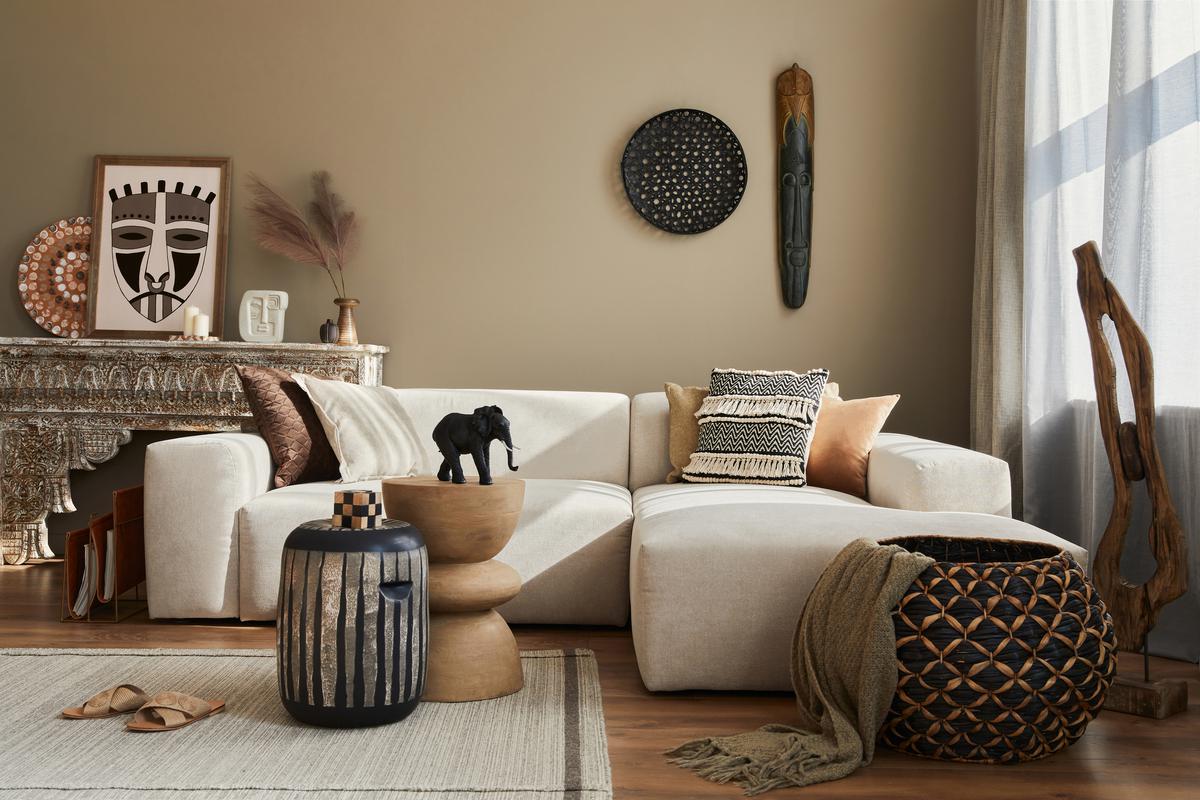While Mediterranean-style architecture is typically seen in warm-weather climates, elements of it can be used anywhere to add warmth and a touch of color to interiors.
While Mediterranean-style architecture is typically seen in warm-weather climates, elements of it can be used anywhere to add warmth and a touch of color to interiors.
Myriad shades of blue were combined with a stunning white. A stone walkway passing through a small garden sits outside. A tiled table and wrought-iron chairs adjoin a sun-baked yellow plaster wall. For a long time, the romance and drama of Mediterranean decor has charmed me. Vibrant colors and textures come together to create an eye-catching appeal and a charming ambiance.
The Mediterranean style has its roots in the cultures of Southern European and North African countries bordering the Mediterranean Sea. Italy, Greece, Spain and Morocco have had a huge influence. And while Mediterranean-style architecture is typically seen in warm-weather climates, elements of it can be used anywhere to add warmth and a touch of color to interiors.
The easy and casual nature of Mediterranean decor makes it easy to update your home. Incorporating Mediterranean elements into your decor can create a casual and dramatic ambiance. Decor can be casual or formal, rustic or elegant, lavish or homely. How do you recreate the exotic air of the area in your rooms?
Component: Mediterranean decor is defined by certain elements of the style. Think bright sun-baked colors, natural light, vibrant furnishings, heavy wood, black metal and carved details. Elements may vary depending on the region. “Moroccan-style design is heavy on wrought iron, patterned tiles, stucco walls and bright textiles. Spanish elements include rich woven tapestries, wrought iron, and pottery. Greek-style decor evokes the colors of the sea. Deep blue, bright aqua and vibrant turquoise are paired with white walls and floors. “Italian essentials include wooden beams, terracotta and earthy materials such as clay tiles,” says Sagar Purohit, an interior designer based in Jaipur. Huh.”
color: The colors of the sea and sky, earth and fire take center stage. Make your choice from the hot end of the spectrum. The plan should highlight the rustic nature of the land, the warmth of the fire, and the many shades of blue that make up the sea and sky. The colors found in the surrounding landscape also complement the scheme – choose from browns, oranges and deep reds, the light and dark greens of the countryside, the lavender and yellow of the flower fields, and the blues and seas of the water and sky. Greens. “If you’re not quite sure where to start, start with sand or taupe, burnt orange, sea green, creamy yellow or olive green. There are shades of color,” says Rohini Sen, a Kolkata-based designer. Whitewashed interiors adorned with pops of glitter also work well.
Upholstery: Furniture can be elegantly crafted from fine hardwoods or can be rustic designed in regular wood. Pieces—ranging from purely functional to extremely formal—are set low and heavy, and are often characterized by tile, marble or iron accents. If you’re looking at vintage-style furniture, consider armoires, chests of drawers and cabinets. “A large rustic dining table with mismatched chairs adds appeal. Simplicity is key, so don’t fill rooms with too many furniture. Add color and interest by tapping into bright colors for soft furnishings,” says Sagar.

Walls: Textured walls, an essential decor element, lend the room an aged patina. Paint and glaze are often rubbed by hand on plaster or sand-textured walls, creating visual depth. Plaster or sand paint is the perfect way to create a washed out effect. “Choose a dull wall—could be in the foyer or hallway—to trowel on sun-baked yellow or muddy lavender, and create a dramatic effect. Stucco molding, cornices, and columns add an elegant appeal,” Rohini says.
Floors: Mediterranean decor translates into hard floors. Tiles are among the many materials in use, whether they are hardwood, ceramic tiles, terracotta tiles, mosaic tiles, limestone or travertine. A terracotta or brick floor is a surefire way to add a Mediterranean flavor. Mosaic tile designs can be woven into the floor for an authentic feel. Mosaic tiles can be used around the home—on stairways and risers, around door and window frames, and in kitchen backsplashes.
Accessories: In addition to the spectacular mosaic tile work on the walls and furniture, colorful accents also define the Mediterranean style. Colorful pottery sparkles a wave of happiness inside or outside the house. Choose from pots and vases in a variety of forms and sizes. Vibrant wall tapestries can be used as window treatments or displayed on iron rods. Don’t skip the metal—wrought iron wine racks, candle stands, light fixtures, mirror frames and charred brass urns add a sense of drama. Filigree light fixtures give a taste of Morocco. Colorful and ethnic rugs will brighten up dark floors. “Mediterranean houses greet the sun every morning by leaving the windows bare. Try using soft drapes with blinds to recreate a streamlined look,” says Rohini.
And as the sun soars high into the sky, enjoy a chilled glass of juice and a new book – with the perfect companions on your Mediterranean getaway!